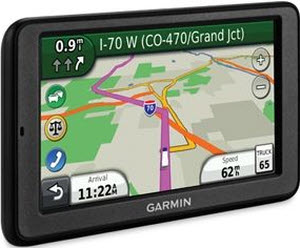 This product took me to within one U-turn of abandoning Garmin completely. It replaced a Garmin Quest which was, in my opinion and for my purposes, nearly perfect. I talk about that here. I could plot routes on my computer then transfer them to the Quest where they were used to guide me along the route just as desired. I would still be using a Quest today if Garmin hadn’t stopped providing map updates around 2005. It wasn’t the roads as much as the POI (Points of Interest). A rerouted expressway or a new exit probably won’t affect any of my routes which tend to follow old roads that haven’t moved in years. But I was using the Quest to find places to eat and sleep and, as time went on, more and more of the mom ‘n’ pop establishments in its data base closed down while the Quest continued to believe them very much alive.
This product took me to within one U-turn of abandoning Garmin completely. It replaced a Garmin Quest which was, in my opinion and for my purposes, nearly perfect. I talk about that here. I could plot routes on my computer then transfer them to the Quest where they were used to guide me along the route just as desired. I would still be using a Quest today if Garmin hadn’t stopped providing map updates around 2005. It wasn’t the roads as much as the POI (Points of Interest). A rerouted expressway or a new exit probably won’t affect any of my routes which tend to follow old roads that haven’t moved in years. But I was using the Quest to find places to eat and sleep and, as time went on, more and more of the mom ‘n’ pop establishments in its data base closed down while the Quest continued to believe them very much alive.
The wild goose chases were aggravating and not being able to depend on there being a functioning motel where the GPS reported one was even more troublesome. With a west coast trip planned for 2011, I decided early in the year to update my guidance system. I did not feel tied to Garmin but some internet searching and forum combing indicated it was still probably my best choice.
Since being able to accept and play back a pre-plotted route is critical for me, I did my best to assure that I got a unit capable of that. It turned out that my best wasn’t good enough though it was awhile before I realized that. Through internet searches, GPS forum exchanges, and email conversations with vendors and Garmin employees I came to believe the 2460LMT would do the job. This unit was at or near the top of Garmin’s line of “automotive” products and, before too long, at or near the top of the “Most Irritating Things I’ve Ever Owned” list.
I ordered directly from Garmin and soon the 2460 was in my hands. After a little playing I tried downloading one of my pre-planned routes. The unit “froze”. Cycling power brought it back and I tried again. In time I realized that the freeze would eventually end on its own and tried various sequences of power, connect, and download but none produced a route on the nüvi. Through a series of emails and phone calls I reached someone at Garmin who seemed to really care. She tried her best. She ran experiments and asked questions and passed information back and forth with untouchable engineering personnel. Her best wasn’t quite good enough either. I did manage to get a tiny test route to appear but my real routes seemed to disappear. In what I took as a lame brushoff but which turned out to be a sorry truth, the engineering folks passed along that “some routes take a really long time.” I’ll skip the rest of the gorey details and let it be known that I did eventually get all of my routes loaded but it was always hours and sometimes days before a route was processed and usable on the nüvi.
Not surprisingly, my opinion of Garmin products was pretty low at this point but it got lower. The unit seemed to work fairly well as I traveled around the area and I even used it to successfully follow a couple of short test routes. I acquired the unit at the beginning of May. In early June I set out for a Lincoln Highway Association conference near Lake Tahoe. The nüvi contained routes intended to guide me along some of the Lincoln Highway’s historic alignments. That the nüvi had flaws became apparent rather quickly but it took awhile to understand them.
The two most onerous nüvi shortcomings are the inability to turn off automatic recalculation and its treatment of each segment as an independent route. A route is a start and end point and some number of intermediate waypoints. At least that’s the way the Quest and I and most routing software sees them. nüvis, however, see routes as nothing more than a list of start and end point pairs. When one point is reached, the nüvi then calculates a path to the next. Since it is always ready to recalculate a route, it does this, not from the point just reached, but from the current position. Here is the sort of real world problem this creates:
Your pre-plotted route contains a right turn just beyond a waypoint. The nüvi guides you to the waypoint and begins calculating a path to the next one. This is hardly instantaneous and you’ve passed that planned turn before it is done. The nüvi is automatically recalculating from your current position so it simply tells you to turn right on some other road then guides you to that next point along a completely different route than the one intended.
If all you want to do is reach the nearest Starbucks as quickly as possible, this behavior is just fine. It is far from fine if you want to reach that Starbucks along a particular road — like the Lincoln Highway or Historic Route 66.
The nüvi 2460LMT is not a bad product. It and all the other members of the nüvi line do what they are intended to do quite well. They are, in fact, the right device for the vast majority of GPS users. The problem is the way Garmin classifies its products. There is a line of products that does routing properly; The way the Quest does and the way I want. But it (zūmo®) is marketed as a motorcycle line and it took someone outside of Garmin to set me straight. I replaced the nüvi® 2460LMT in less than a year. When I tell of that replacement in a future My Gear installment, I may also tell you what I really think of those silly names.

 An HP Pavilion barely made it two years, a Toshiba Satellite didn’t quite make three, and both were limping during their final months of service. This post is being written on a Lenovo T400 that’s still going strong after three and a half years as my do-everything and go-everywhere computer. My computers aren’t really treated harshly but they certainly aren’t pampered. That includes the Lenovo and I’m convinced that its relative longevity is due entirely to superior design and build quality. It seems to truly be an example of “getting what you pay for”.
An HP Pavilion barely made it two years, a Toshiba Satellite didn’t quite make three, and both were limping during their final months of service. This post is being written on a Lenovo T400 that’s still going strong after three and a half years as my do-everything and go-everywhere computer. My computers aren’t really treated harshly but they certainly aren’t pampered. That includes the Lenovo and I’m convinced that its relative longevity is due entirely to superior design and build quality. It seems to truly be an example of “getting what you pay for”.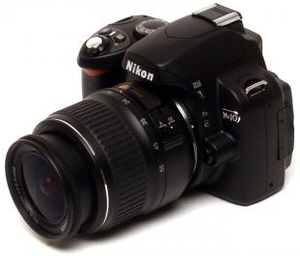 The two Panasonics were very capable cameras. They and cameras like them were sometimes referred to as “super zooms” and sometimes as “bridge” cameras. That second name comes from the view that they “bridge the gap” between simple point-and-shoot cameras and more versatile SLRs with interchangeable lenses and such. I guess that’s a pretty good view because that’s exactly what the FZ8 did for me. It led me straight down the road and right across the bridge to SLR land.
The two Panasonics were very capable cameras. They and cameras like them were sometimes referred to as “super zooms” and sometimes as “bridge” cameras. That second name comes from the view that they “bridge the gap” between simple point-and-shoot cameras and more versatile SLRs with interchangeable lenses and such. I guess that’s a pretty good view because that’s exactly what the FZ8 did for me. It led me straight down the road and right across the bridge to SLR land.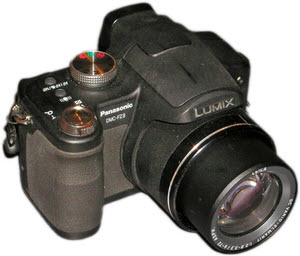 In the year and a half between my buying the DMC-FZ5 and banging it against the ground in Missouri, Panasonic had been improving the line and dropping the price. In June of 2007, I was able to buy the latest model, the FZ8, for $340 or roughly fifty dollars less than I’d paid for the FZ5. Resolution was up from 5.0 MP to 7.2 MP and manual focus was added. Overall, the changes were more evolutionary than revolutionary, the size was up just a smidgen, and the weight was still under eleven ounces. I had an even more capable camera and I didn’t have to be completely retrained.
In the year and a half between my buying the DMC-FZ5 and banging it against the ground in Missouri, Panasonic had been improving the line and dropping the price. In June of 2007, I was able to buy the latest model, the FZ8, for $340 or roughly fifty dollars less than I’d paid for the FZ5. Resolution was up from 5.0 MP to 7.2 MP and manual focus was added. Overall, the changes were more evolutionary than revolutionary, the size was up just a smidgen, and the weight was still under eleven ounces. I had an even more capable camera and I didn’t have to be completely retrained.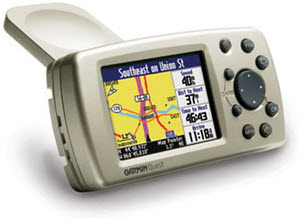
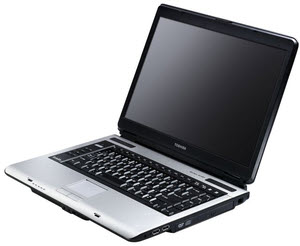 My HP Pavilion was misbehaving by September of 2005 but I somehow put off buying a replacement until April of 2006. The problem was a motherboard crack that affected the power. I could minimize its surprise shut-downs by keeping it stationary so I nursed it through the winter by doing just that and using the aged but trusty Toshiba Portege from time to time. Because both the Portege and the Libretto had served me well, when I finally I went shopping it was specifically for a Toshiba. For $850 I got a Satellite A105 with an 80 GB hard drive and a 1.7 GHz Intel Celeron processor running Windows XP. I believe it might have come home with 512 MB RAM but I soon brought that up to the maximum 2 GB. This was a pretty nice machine.
My HP Pavilion was misbehaving by September of 2005 but I somehow put off buying a replacement until April of 2006. The problem was a motherboard crack that affected the power. I could minimize its surprise shut-downs by keeping it stationary so I nursed it through the winter by doing just that and using the aged but trusty Toshiba Portege from time to time. Because both the Portege and the Libretto had served me well, when I finally I went shopping it was specifically for a Toshiba. For $850 I got a Satellite A105 with an 80 GB hard drive and a 1.7 GHz Intel Celeron processor running Windows XP. I believe it might have come home with 512 MB RAM but I soon brought that up to the maximum 2 GB. This was a pretty nice machine. Unlike most of my camera purchases, the
Unlike most of my camera purchases, the 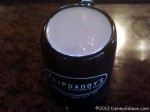
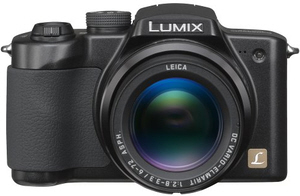 This was my 2005 Christmas present to myself. It was clearly a step up in many regards but it was also a step away from some characteristics I’d cherished in my previous digital cameras. The change in form is significant. Although the Lumix DMC-FZ5’s height and width were each but a fraction of an inch larger than the
This was my 2005 Christmas present to myself. It was clearly a step up in many regards but it was also a step away from some characteristics I’d cherished in my previous digital cameras. The change in form is significant. Although the Lumix DMC-FZ5’s height and width were each but a fraction of an inch larger than the 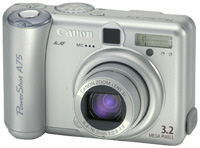 Late in the spring of 2004, the lens on my A20 zoomed its last. As I recall, it was stuck somewhere in the middle of its range. It still took pictures but the lack of zoom was irritating and the permanently protruding lens made it awkward to pocket. Besides, there had been three years of progress since my last camera purchase and I was ready to take advantage of it.
Late in the spring of 2004, the lens on my A20 zoomed its last. As I recall, it was stuck somewhere in the middle of its range. It still took pictures but the lack of zoom was irritating and the permanently protruding lens made it awkward to pocket. Besides, there had been three years of progress since my last camera purchase and I was ready to take advantage of it.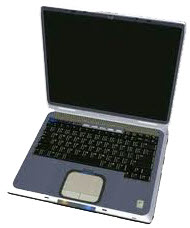 Despite this seeming to be the most expensive computer I’ve ever owned, I remember very little about it. Oh, I definitely remember owning it and its painful demise. I just don’t remember any technical details about it. I do remember that its purchase was triggered by the need to replace a desktop PC.
Despite this seeming to be the most expensive computer I’ve ever owned, I remember very little about it. Oh, I definitely remember owning it and its painful demise. I just don’t remember any technical details about it. I do remember that its purchase was triggered by the need to replace a desktop PC.